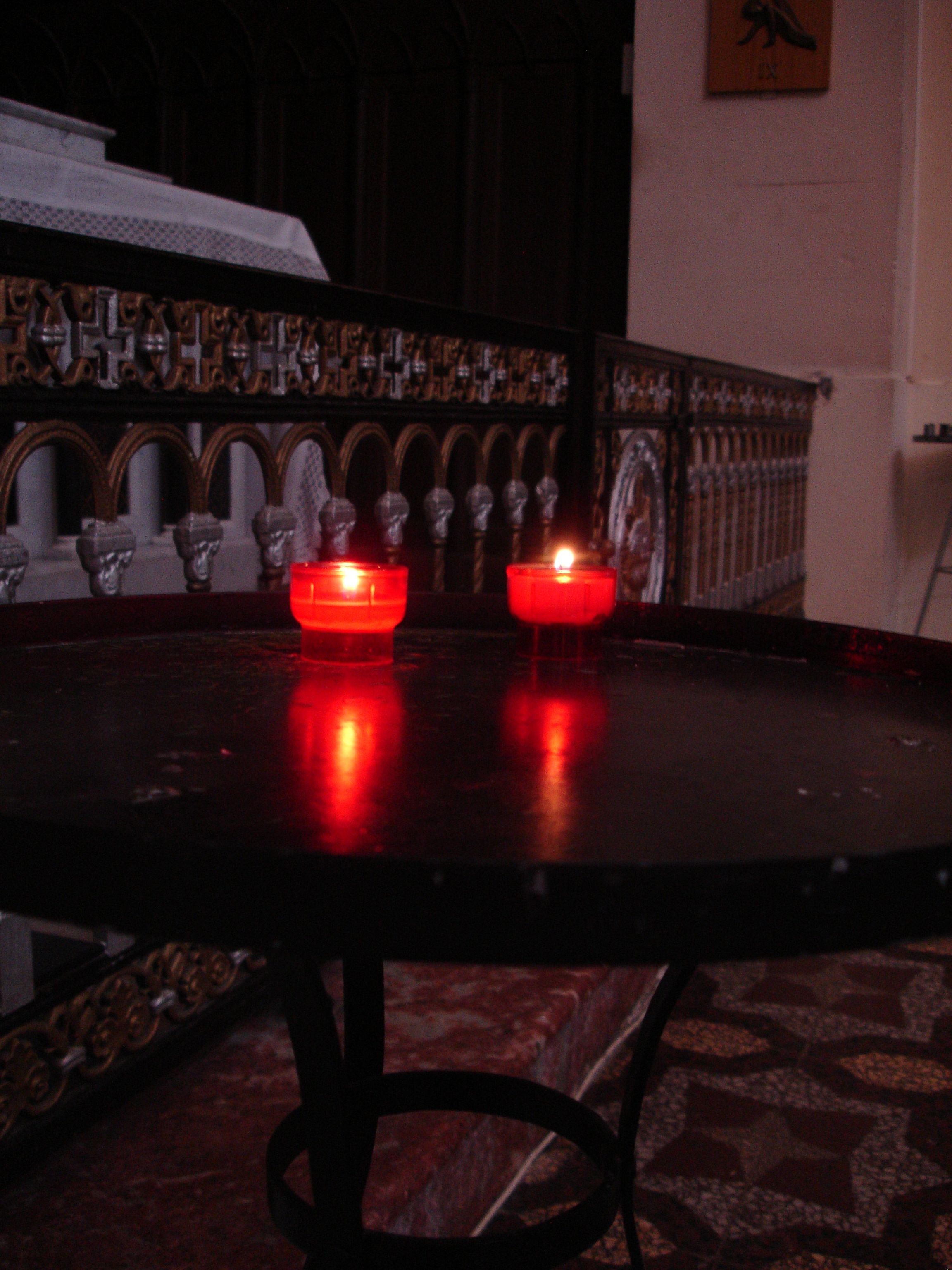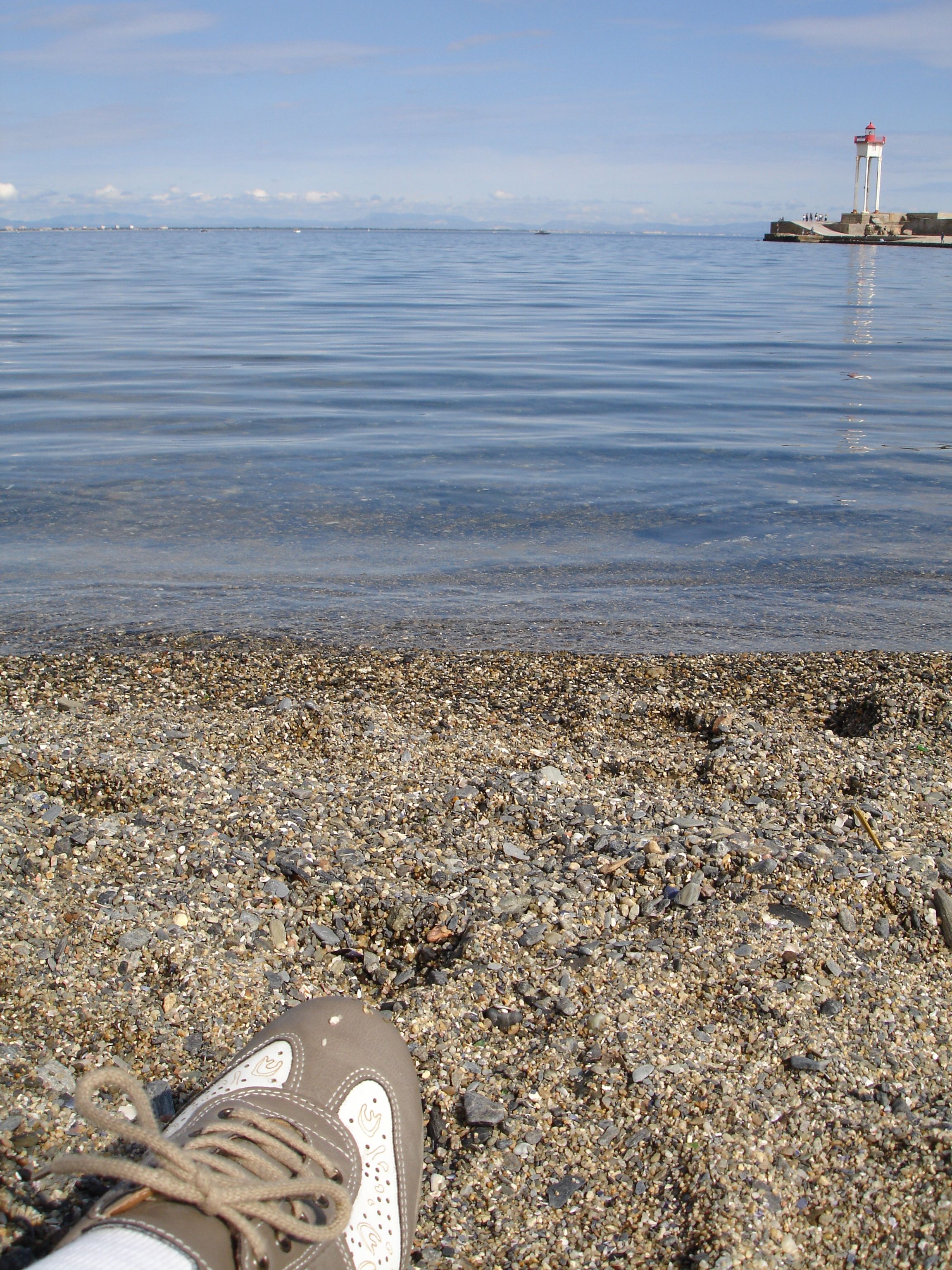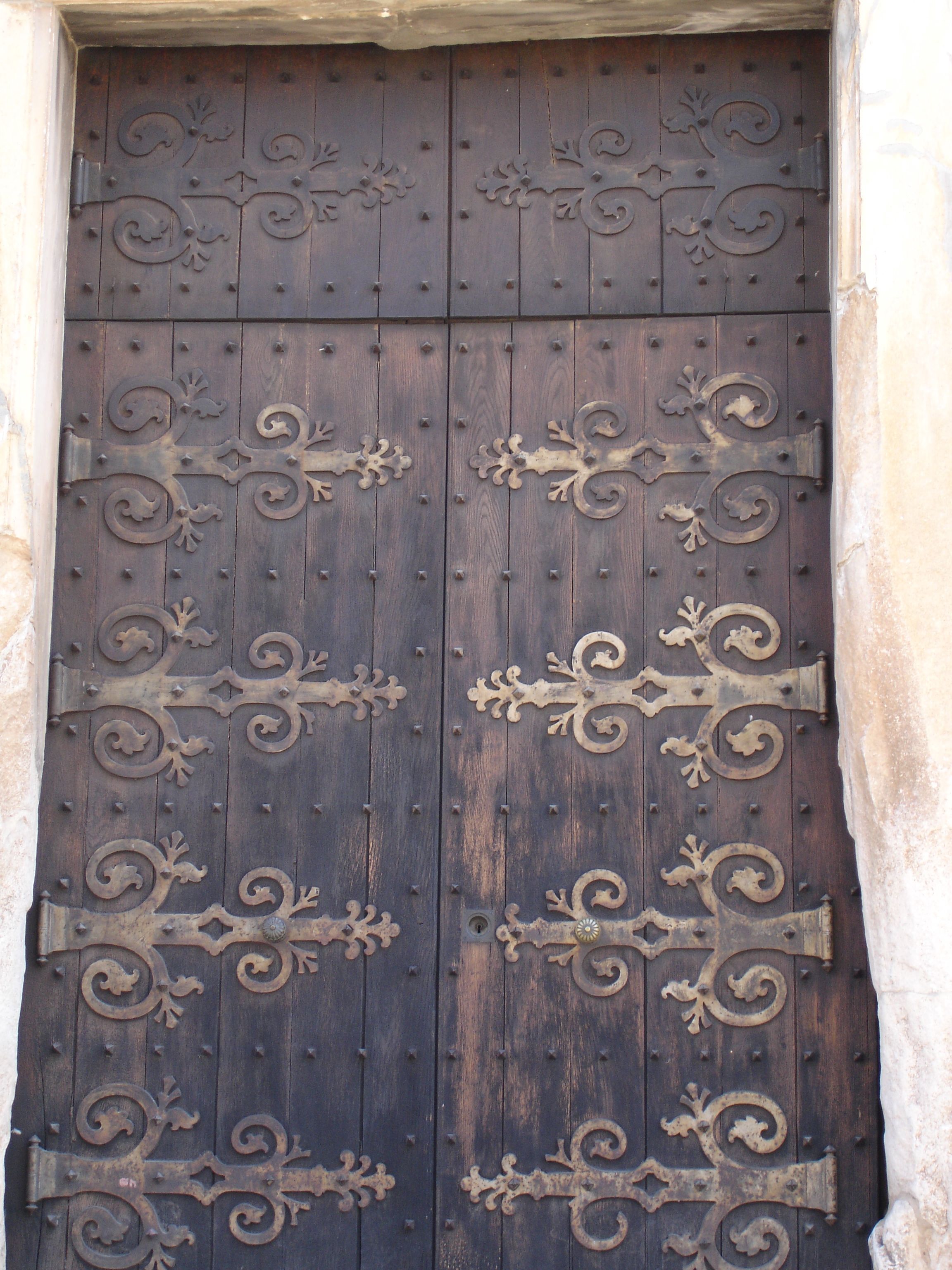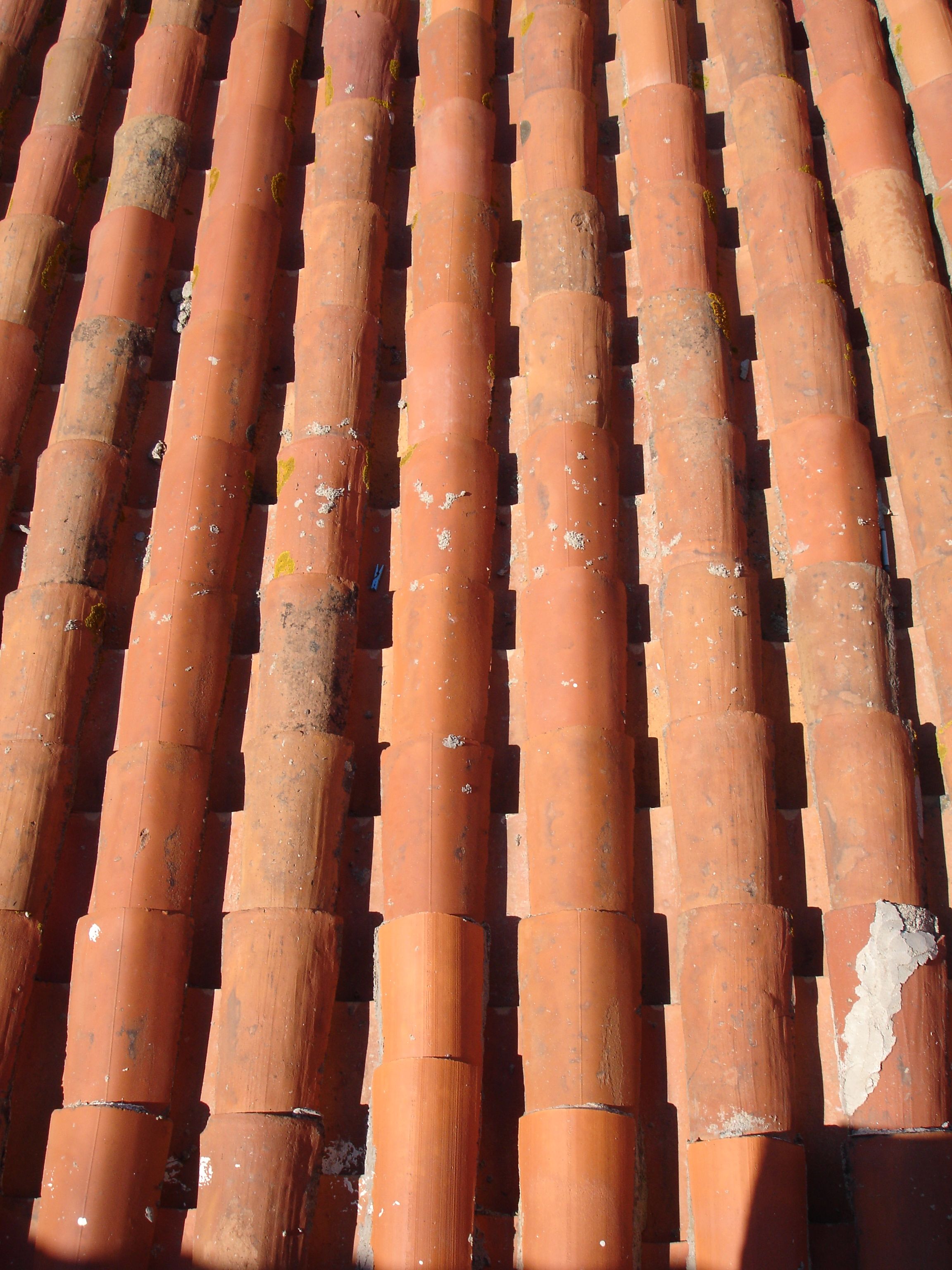When I walked up over this hill in the early morning and looked back at the village, I was completely alone on a small part of the Mediterranean coast. No one knew where I was.

Turning round to see the sea, I looked down over this cove, and, on the far side, a fort and war ruins, French and German, that remain on the cape.

Having escaped from civilisation for a brief hour, I walked down to take a closer look at the ruins and saw why this point had been chosen for a fort; it’s ideal for shooting and blowing up shipping way out on the horizon. No escape for them.
This is one of two arches through which cannons were pointed, with holes for thinner weapons. Unfortunately, with the arch and holes positioned as they are, it resembles a face.

It was horrible, seeing this war junk lying all along the cliff edges.

What struck me was the ugliness of concrete, while the nineteenth-century stone fort has that element of beauty found in stone construction all around this region, whether it be houses, barriers, walls, steps or forts. Here’s some more ugly concrete, a piece of German war litter, a base for a revolving cannon.

Fortunately, wars end, and life is good again. But if you need to take a break from the troubles of ordinary peacetime life, I recommend this coastline where surprises make every day special. I found this beautiful Bottlebrush tree, which I didn’t know grew outside of Australia, growing on a hill with red roses, grapevines and palm trees, all overlooking the blue Mediterranean.





















